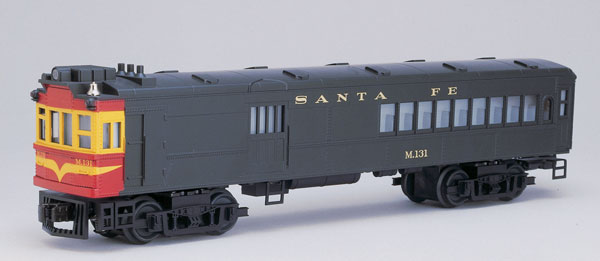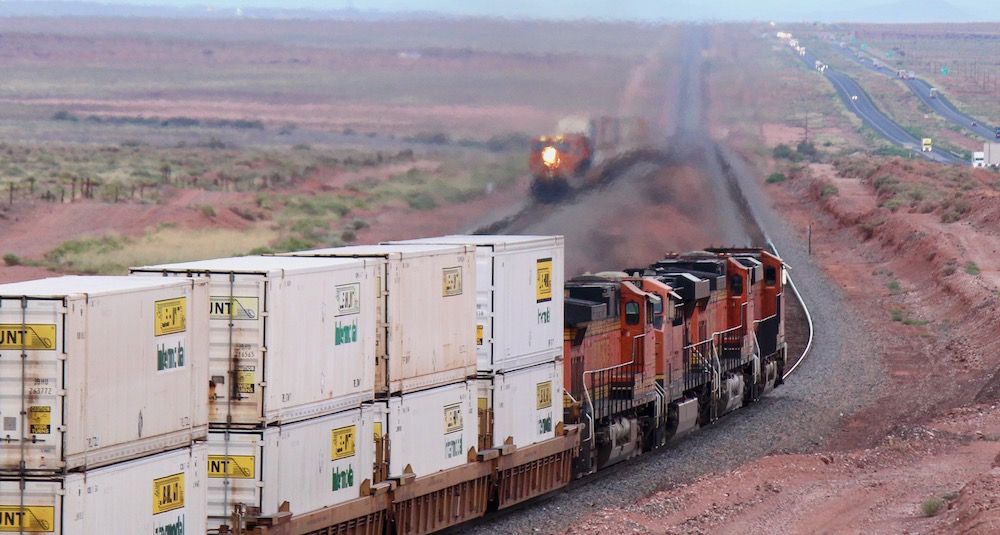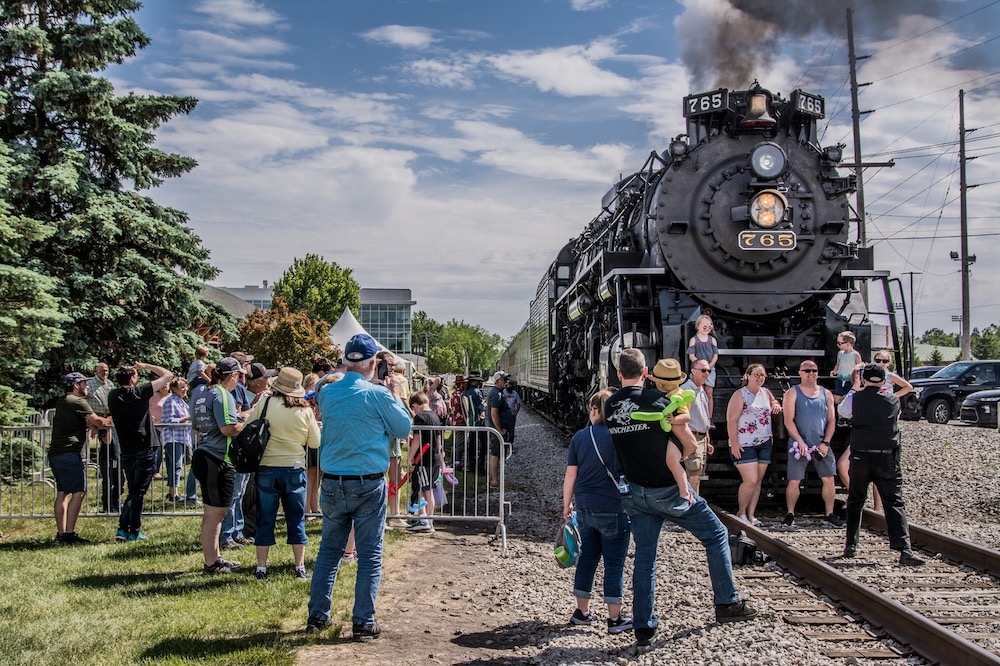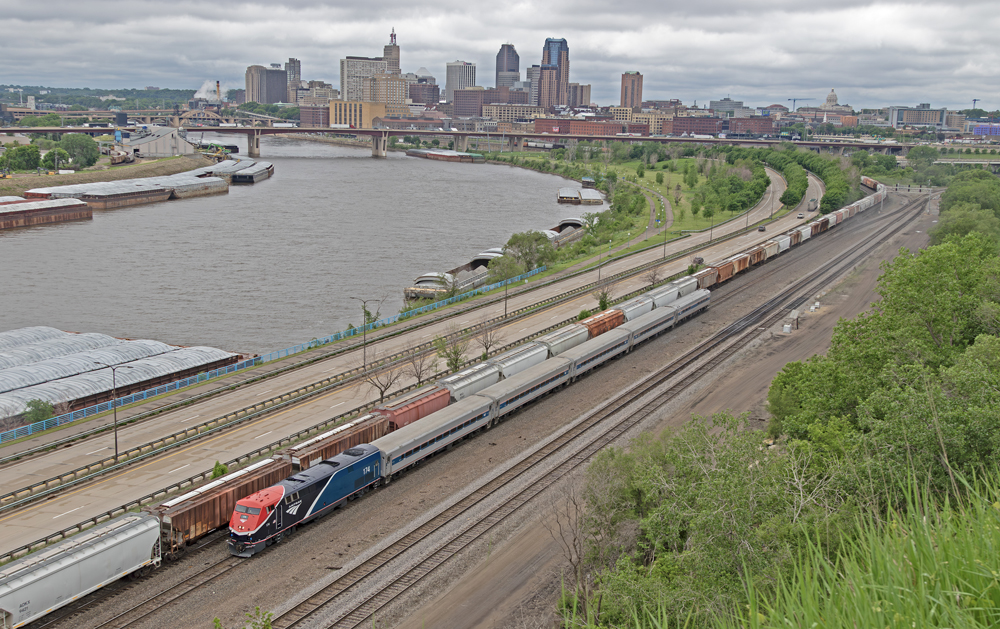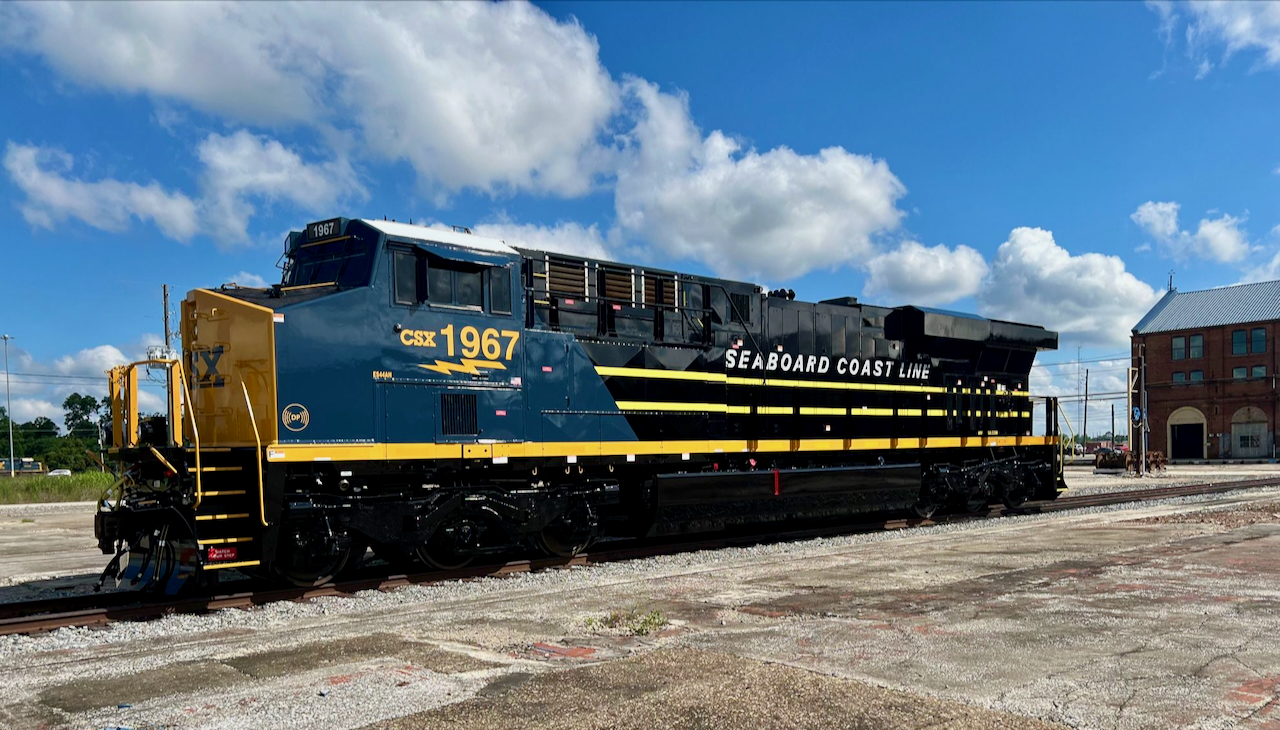Shortlines and Class 1 roads alike used motor cars, or doodlebugs, as they’ve become affectionately known. The rail motor car concept promised customers speedy transit, undoubtedly at speeds higher than the steam-powered branch line trains of the day.
Of course, management wasn’t just being altruistic. It was far more economical to operate a motor car or a motor car and trailer than it would be to operate a steam or diesel engine and two or three cars (and of course, an expanded crew).
If it looks a lot like a heavyweight coach, that’s not surprising. No doubt using coach plans that were easily adaptable to motor cars helped manufacturers and railroads save even more money. In time, the idea evolved into the Rail Diesel Car (RDC), models of which have been offered by Lionel, Marx, Williams, and MTH.
The MTH RailKing model is based on a popular Electro-Motive Co. 80-foot design. Specifically, the Santa Fe’s no. 131 was an EMC model no. 148 built in 1929. The original had an additional door and window set for an RPO section that one reference indicates was never used. The doodlebug was equipped with a 400-hp gasoline engine (re-engined with a Caterpillar diesel in 1952), had room for 35 passengers, and ran at a maximum speed of 60 mph. It was scrapped in 1958.
The RailKing model looks great, and based on photos and diagrams of Santa Fe no. 131 in John McCall’s book The Doodlebugs, the model appears to be a good representation of its prototype.
Though part of the lower-priced RailKing line, the model is finished off with several detail items of note. The car has a bright headlight and red marker lights. The engine has a cast-in horn on the roof, but a nice add-on bell over the fireman’s position. Three simulated exhaust stacks crown the doodlebug’s cab.
The truck frames and couplers are die-cast metal, as is the steam-style cow-catcher. The truck frames in particular look great. There is also a nice bit of underframe detail simulating air tanks and chains.
The car features an illuminated interior and passenger seats, and to help nurture the illusion of reality, it has a plastic shield running along the interior to hide the can motors from view. CTT would bet that there are operators who have already fitted their doodlebugs with tiny people for a better visual effect.
The car measured 151/2 inches long, or approximately 62 scale feet (the prototype measured 80 feet).
The ProtoSound system was very good and the startup sounds – something akin to a diesel truck – are a real crowd pleaser. The system also features station sounds and squealing brakes.
This car is a great operator. Equipped with two can motors (with flywheels) and two traction tires on each truck set, delivering quick, sure-footed acceleration and nice coasting stops. Our average low running speed was 32 scale mph, and the high end was 131 scale mph.
The ProtoSound doodlebug is equipped with two ProtoCouplers, which allow you tremendous flexibility in uncoupling rolling stock. Rolling stock? With a drawbar pull of 2.3 lbs., it would almost be a crime not to attach a suitable heavyweight car or two, or even a string a freight cars! It may not be prototypical, but hey, count the rails. This is an operator’s product, and you can use it as you please!
CTT asked Chris Smithson of MTH if the company planned on releasing trailers to match the doodlebug. Smithson said that the company hadn’t originally intended to do so, but that favorable customer response has made trailers a possibility. He warned, however, not to expect a trailer soon.
The MTH RailKing doodlebug is a nifty model of a “footnote” item in the history of most railroads. Performance was very good, and it would be at home on layouts modeling both the prewar and postwar eras.





